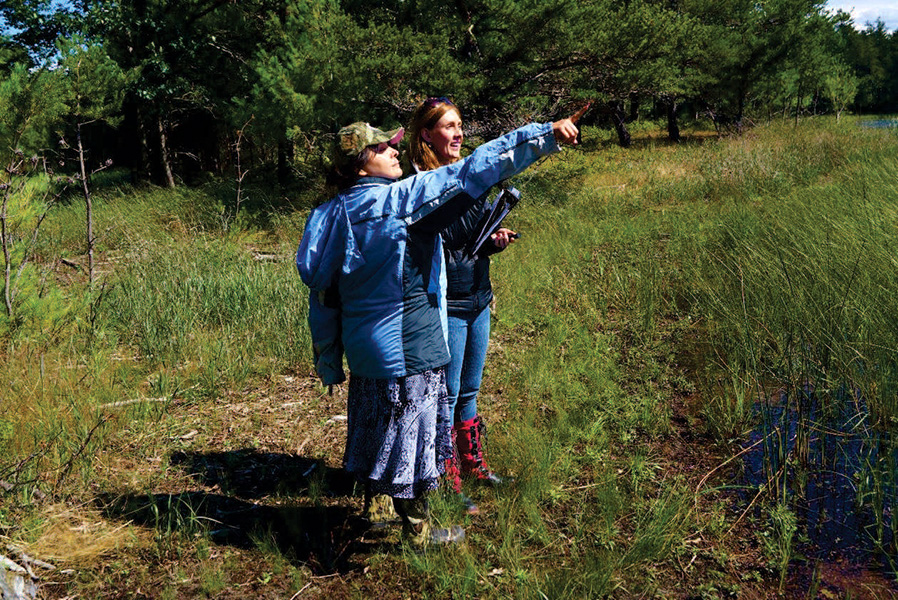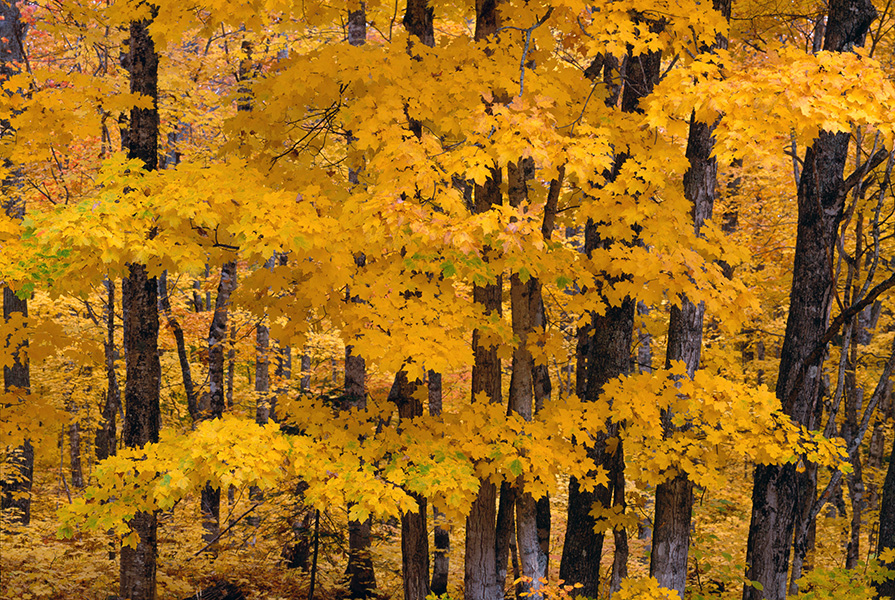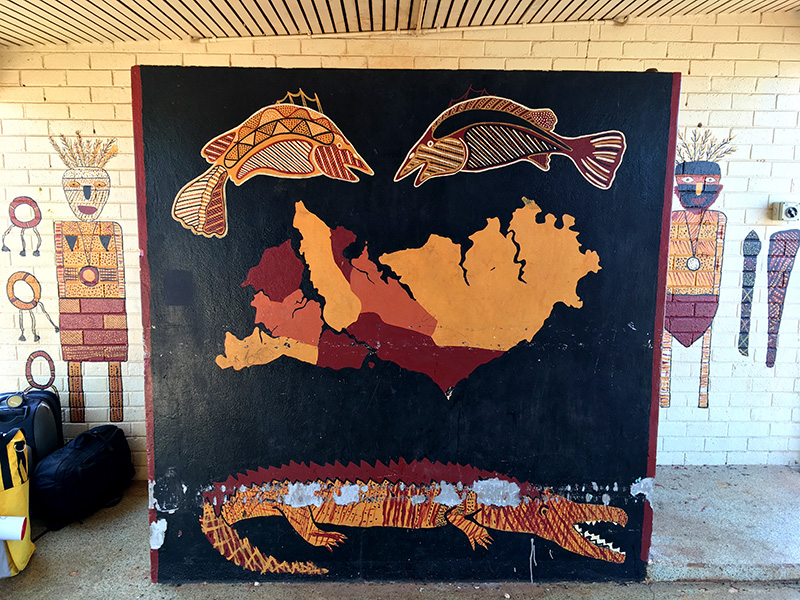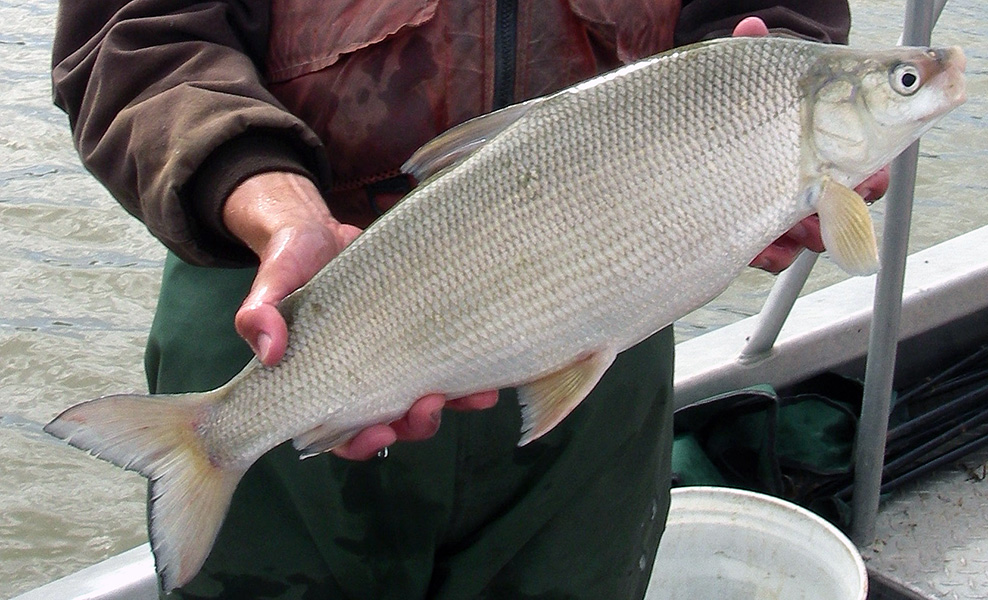Leaning into Indigenous knowledge on climate change
Native peoples attuned to the natural world have long collected detailed environmental information. Now scientists are cataloging these observations and learning how they’re affecting Indigenous communities globally.
Support sound science and smart stories
Help us make scientific knowledge accessible to all
Donate today
It used to be that when the warm nights came each summer, Frank Ettawageshik would spend most of his time outdoors, often sleeping outside, right on the ground. He balks at the thought of that today without the proper precautions. “I was 35 or so before I ever saw a tick,” says the 74-year-old executive director of the United Tribes of Michigan, a Native American advocacy group. In northern Michigan today, he says, “there’s ticks all over the place.”
Ettawageshik is part of the Anishinaabe culture, whose members are from the Great Lakes. His own Tribal Nation is the Little Traverse Bay Bands of Odawa Indians, who have lived in the northwestern shores of Michigan’s lower peninsula for centuries. Besides the spread of ticks, a phenomenon exacerbated by rising temperatures, they’ve witnessed the struggling populations of whitefish in nearby Lake Michigan and the gradual changes in harvests from the sugar maple tree, whose name in Odawa is “niinatig” — our tree. Research suggesting that warmer temperatures might force sugar maples out of Michigan add to Ettawageshik’s concerns. “Our tree is going to be moving away from us,” he says.
Ettawageshik’s tribe has observed many changes to their ancestral lands over hundreds of years, but Ettawageshik says human-caused climate change is different. “It’s happening at a pace that we don’t normally see.”
“Climate science,” for many people, brings to mind satellite observations, temperature records or the analysis of ice cores. But there’s plenty more data besides that. Indigenous communities that have long lived close to the land — and have traditionally depended on deep knowledge of their environments to survive — often hold their own records and recollections. These can include extraordinary details about alterations in weather patterns, changes in vegetation or unfamiliar behavior of animals that have emerged under their watch.
Today, anthropologists and climate researchers in Western institutions are increasingly turning to Indigenous people to ask what they have observed about the world around them. In the process, these scientists are learning that Indigenous communities have been cataloging, in their own way, data about change at a hyper-local level — insights that Westernized climate science might miss — and also how that change is affecting people.
“I believe in Native science — that it’s real science,” says Richard Stoffle, an anthropologist at the University of Arizona, lead author on a 2023 paper that lists various observations from Anishinaabe people belonging to three tribes in the Upper Great Lakes. The anonymous interviews, conducted in 1998 and 2014, featured comments on a wide range of environmental changes witnessed by Anishinaabe people over the decades: hotter summers, drier springs, mushrooms emerging at weird times of the year, or plants that don’t yield as much fruit or sap as they used to.

An Odawa (Anishinaabe) tribe representative shares cultural knowledge of plants, passed down through generations, at Sleeping Bear Dunes National Lakeshore in Michigan. The Odawa have lived in the region for centuries and have witnessed habitat shifts due to climate change.
CREDIT: COURTESY OF RICHARD STOFFLE
The recollections, Stoffle says, make it clear that the Anishinaabe people have been monitoring anthropogenic climate change long before it was a regular topic of public discussion.
“It’s not like it was in the old days, I think the nights and days aren’t as cold as they used to be,” said one contributor. “That’s what brings that sap up into the trees. It draws it and pushes that sap up. I used to hear those trees snap up there in the woods because, those maple trees, that sap would freeze and crack the trees. I used to have to wait for the bus and hear the trees out there.”
“Wow, that is a spring morel! Finding it here in September is insane!” another participant commented on a mushroom observation.
Asking Indigenous people about the changes that they are witnessing helps us to understand what matters to them, what issues require attention, says Victoria Reyes-García, an anthropologist at the Universitat Autònoma de Barcelona and the Catalan Institution for Research and Advanced Studies, and coauthor of a 2021 article in the Annual Review of Environment and Resources about turning to Indigenous knowledge and values to help address environmental problems.
Plus, adds Sergio Jarillo, an anthropologist at the University of Melbourne, it benefits science globally because, by speaking to people, you can find out the true impact of what climatology suggests is happening in the world.
“Consulting with local people gives you a more complete, and holistic, picture than you would ever get just using measurements,” he says.

Among the species threatened by climate change is the sugar maple, whose name in Odawa is “niinatig,” or “our tree.”
CREDIT: JOHN BARGER / ALAMY STOCK PHOTO
Sea levels in the Southern Hemisphere
Off the north coast of Australia lie the Tiwi Islands, where Jarillo has been asking Indigenous people about the environmental changes they are seeing. In a paper published in March 2023, he and colleagues present comments from participants alongside drone-captured imagery of coastlines that show the coastal erosion that worries many members of the community. Erosion is a natural process, but in this case it is probably exacerbated by rising sea levels caused by anthropogenic climate change, says Jarillo.
To geomorphologists, that development would be far from surprising. So why make the effort to ask Indigenous people about it? The difference is that you find granular data that a satellite image could never provide — such as photos of the beach, shown to Jarillo and colleagues, that were taken around the 1950s and 1960s by islanders. “There was a fish trap that was permanently on the beach,” Jarillo says, referring to a traditional structure for catching fish. “There’s no longer space.”
The Tiwi community has been around for long enough to notice lots of changes, and they spend a lot of time in direct contact with the environment, adds Jarillo: “They know where there is erosion, they know if there’s a creek that is drying up.”
It is a justice issue, too, because these environmental changes can have significant effects on the health and well-being of people who live in these islands. Many participants who contributed to the research expressed concerns about land lost to erosion near to a renal center in the settlement of Wurrumiyanga — an important health-care facility in a community where kidney failure is the leading cause of death. Highlighting Indigenous people’s knowledge of threats like this might prompt action. The very act of documenting such information is potentially significant because, the paper authors note, “in the case of the Tiwi, there has been no local, Territory, or Commonwealth government initiatives to support climate change adaptation.”

An Indigenous artist’s mural from the Tiwi Islands, off the north coast of Australia, depicting the islands and animals. Traditional peoples there have witnessed ecological shifts such as erosion of beaches, flooding and changes in the tides.
CREDIT: SERGIO JARILLO
Nelson Chanza, a climate adaptation scientist at the University of Johannesburg, also recorded finer details after talking to direct witnesses of changes to the environment in Zimbabwe. In a study published in 2022, he and a colleague gathered observations made by 37 Indigenous elders from the Mbire District in northern Zimbabwe. This, Chanza says, is a part of the world where meteorological data collection is relatively sparse: The study area is about 80 kilometers (roughly 50 miles) from the nearest weather station.
The elders, whose average age was 63, helped to fill in the gaps by recounting memories of how the environment had changed over the years. Many observed that the rainy season now starts later and ends sooner than it once did. But there were variations on this point, suggesting different areas were drying up at different rates. “That detail: You tend to lose it if you only rely on the meteorological data,” says Chanza. In addition, elders related how various fruits, such as Uapaca kirkiana (mazhanje), also known as sugar plums, are becoming less abundant, smaller in size and poorer in quality.
Reports like this are full of information and yet “they might be treated as anecdotal,” says Reyes-García. In an attempt to encourage non-anthropologists to take such information seriously, and to standardize data collection involving Indigenous communities, Reyes-García and colleagues have developed a study protocol that could be applied to any community anywhere in the world.
It involves collecting, for example, meteorological data as well as carrying out multiple interviews with Indigenous individuals who have lived a long time in a particular place. Comments with group consensus would then be classified in a database. Entries in this database could catalog anything from observations about wind speed and temperature to animal behavior. Such standardization could help to make such information, though admittedly stripped of its color and richness, appealing to climate researchers and international bodies such as the Intergovernmental Panel on Climate Change, says Reyes-García.
Knowing what is important to Indigenous communities is also beneficial because it helps anyone involved in planning mitigation or adaptation strategies to do so appropriately, says Reyes- García.
Data and a way of life
Listening carefully can reveal the true depth of the challenges faced by Indigenous communities, too — so by recording their observations of climate change, there is an opportunity to work on climate justice. “I see my culture starting to disappear,” is how one Indigenous participant in a 2022 study described the severity of change. The paper resulted from a two-day workshop attended by elders, knowledge holders and young adults (ages 19 to 30) from 12 Anishinaabe communities around the Great Lakes region.
One of those communities, the Magnetawan First Nation, had the initial idea for an information-gathering session. “They just said, ‘Hey, this is something we’re concerned about. Can you organize something?’” says lead author Allyson Menzies, a wildlife ecologist at the University of Guelph. As Menzies and her coauthors reported, the 37 participants discussed a range of effects they had noticed, such as how strawberries were appearing later in the year — July rather than June — and how fish spawning, which used to last a month, now continues for only about two and a half weeks because of rising river water temperatures.

Anishinaabe people are tracking struggling whitefish populations in the Great Lakes to try and find out what is affecting this important food source.
CREDIT: USFWS
The participants also said that passing on traditional harvesting and hunting techniques was becoming difficult since these depend on the climate behaving in a way that it no longer does. This concept of evaporating culture is familiar to many Indigenous people. Inuit communities on Baffin Island, Canada, for instance, frequently report that, as temperatures soar, they are finding it harder to predict the weather, navigate the ice and pass on hunting skills to younger members.
In that sense, we might miss something important if we treat research involving Indigenous communities as merely an exercise in filling in cells on a giant spreadsheet, says Ben Orlove, an anthropologist at Columbia University who coauthored an article about climate anthropology in the 2020 Annual Review of Anthropology. “I think the Indigenous people are saying the whole problem with climate change is not the data gaps,” he says. “It’s the limits in your framework.” Speaking broadly, he says there’s a tension between the Western view of the natural world as a resource to be exploited and the Indigenous view of a world where humans and nature are part of one single whole.
Ettawageshik of the Little Traverse Bay Bands of Odawa Indians agrees: Traditional knowledge is not just an encyclopedic list of facts. What matters, he says, is the Odawas’ ongoing relationship with beings — plants, animals and natural places.
“We’re but one spot in that web of life,” he says. “We knew that in that web of life we could not survive without the other beings and, those other beings, they agreed to take care of us. And we agreed to take care of them.”
10.1146/knowable-101123-1
TAKE A DEEPER DIVE | Explore Related Scholarly Articles




